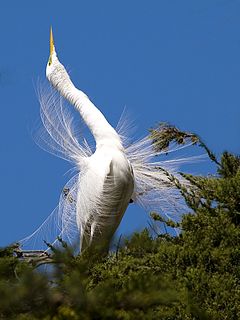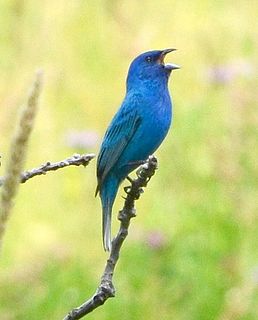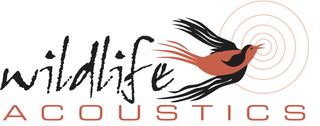 W
WAnimal communication is the transfer of information from one or a group of animals to one or more other animals that affects the current or future behavior of the receivers. Information may be sent intentionally, as in a courtship display, or unintentionally, as in the transfer of scent from predator to prey. Information may be transferred to an "audience" of several receivers. Animal communication is a rapidly growing area of study in disciplines including animal behavior, sociology, neurology and animal cognition. Many aspects of animal behavior, such as symbolic name use, emotional expression, learning and sexual behavior, are being understood in new ways.
 W
WAnimal song is not a well-defined term in scientific literature, and the use of the more broadly defined term 'vocalizations' is in more common use. Song generally consists of several successive vocal sounds incorporating multiple syllables. Some sources distinguish between simpler vocalizations, termed “calls”, reserving the term “song” for more complex productions. Song-like productions have been identified in several groups of animals, including cetaceans, avians (birds), anurans (frogs), and humans. Social transmission of song has been found in groups including birds and cetaceans.
 W
WBioacoustics is a cross-disciplinary science that combines biology and acoustics. Usually it refers to the investigation of sound production, dispersion and reception in animals. This involves neurophysiological and anatomical basis of sound production and detection, and relation of acoustic signals to the medium they disperse through. The findings provide clues about the evolution of acoustic mechanisms, and from that, the evolution of animals that employ them.
 W
WBiotremology is the study of production, dispersion and reception of mechanical vibrations by organisms, and their effect on behavior. This involves neurophysiological and anatomical basis of vibration production and detection, and relation of vibrations to the medium they disperse through. Vibrations can represent either signals used in vibrational (seismic) communication or inadvertent cues used, for example, in locating prey. In almost all known cases, they are transmitted as surface waves along the boundary of a medium, i.e. Rayleigh waves or bending waves. While most attention is directed towards the role of vibrations in animal behavior, plants actively respond to sounds and vibrations as well, so this subject is shared with plant bioacoustics. Other groups of organisms are also postulated to either actively produce or at least use vibrations to sense their environment, but those are currently far less studied.
 W
WDolbear's law states the relationship between the air temperature and the rate at which crickets chirp. It was formulated by Amos Dolbear and published in 1897 in an article called "The Cricket as a Thermometer". Dolbear's observations on the relation between chirp rate and temperature were preceded by an 1881 report by Margarette W. Brooks, although this paper went unnoticed until after Dolbear's publication.
 W
WA social skill is any competence facilitating interaction and communication with others where social rules and relations are created, communicated, and changed in verbal and nonverbal ways. The process of learning these skills is called socialization. Lack of such skills can cause social awkwardness.
 W
WWildlife Acoustics, Inc. is a privately held United States company based in Maynard, Massachusetts. The company provides bioacoustics monitoring technology for scientists, researchers, and government agencies internationally. The company was founded by Ian Agranat in 2003. The company originally developed a product called the Song Sleuth, a device that would attempt to automatically identify birds from their songs in real time in the field. As this concept proved too expensive for the consumer market, the underlying technology was used to develop autonomous acoustic and ultrasonic recorders and analysis software for research scientists and other professional ecologists.